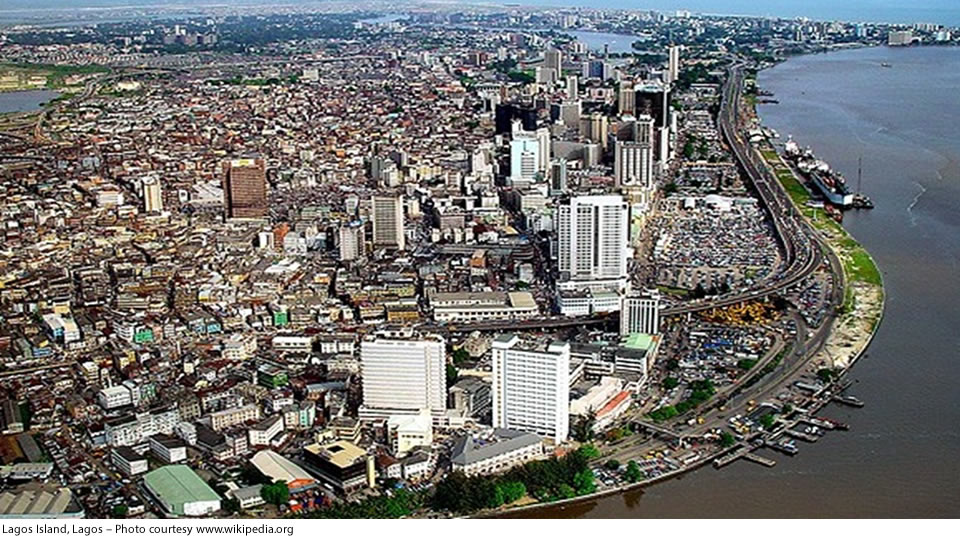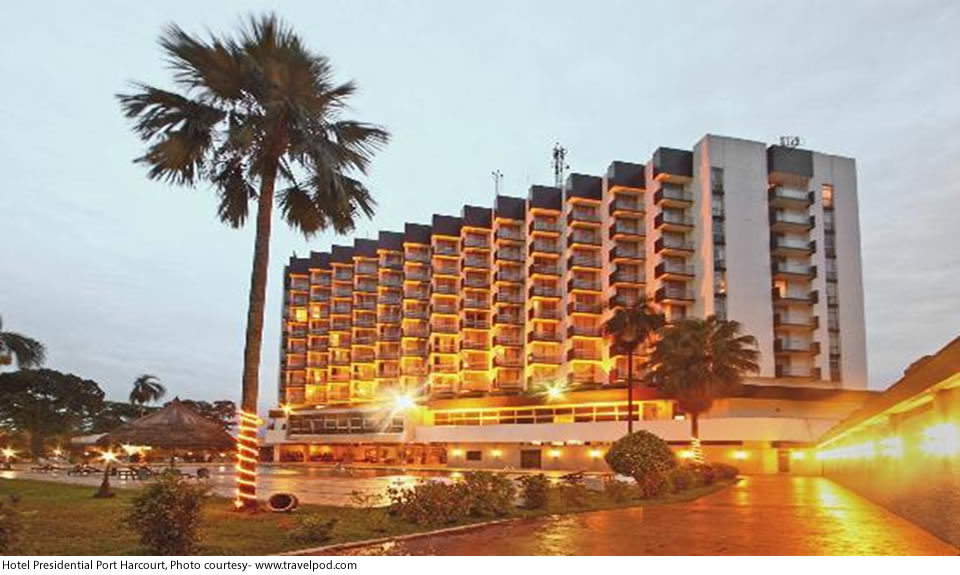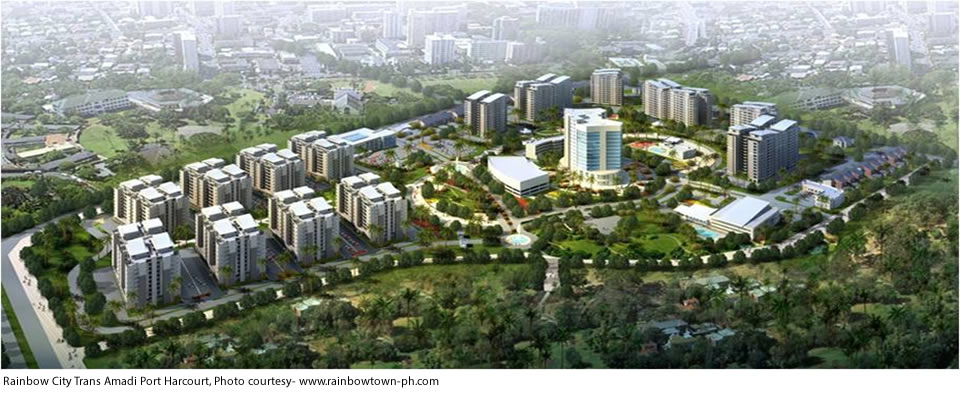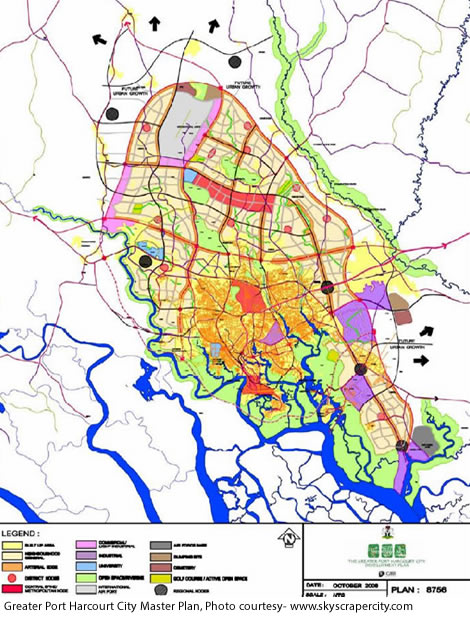Trends In Modern Nigerian Architecture; The Lagos Megacity And Port Harcourt Megapolis Comparison
By Ololade Babajide - Suleiman
Lagos and Port Harcourt have similarities, why compare? The only reason I will comprehensively compare both cities is simply because I have just recently moved to Port Harcourt from Lagos after living in Lagos all my life. Pardon me if my observations seem biased or one sided.
Lagos is the most populated state in southwestern Nigeria; the commercial nerve center of Nigeria, dare I say West Africa, with an estimated population of almost 20million residents that has increased by 50% since the last census. It is indeed one of the fastest growing cities in the world and has been conferred the Megacity status as a result of this, howbeit that the city is host to some of the poorest communities in the world.
Port Harcourt with the city slogan being – “The Garden City” is the capital of Rivers State, Nigeria; located in the south-south geo-political zone of the country. It is the economical and political nerve center of the South – South and South – East. It appears to be an unfair comparison- a state with a state capital. |
 |
I will begin by observing the social character of both cities and not economic character, though it is possible for one to affect the other. It is my belief, that there is an effect each city's character has on the trend of Architecture expressed in these two cities in Nigeria. Both cities experience similar climatic conditions – Tropical Wet and Dry Climate, and soil types – swampy, sandy and hard.
Both cities have water bodies, Lagos is the Portuguese word for Lagoon, Rivers as the name implies is a state with rivers; both cities have Ports facing the Atlantic Ocean, the science that can bring any possible difference in building Architecture borders on culture, perceptions, and social character. |
 |
Port Harcourt is the larger of the twin cities of Port Harcourt and Obio/Akpor, developed mainly through export- first of Coal, Palm Oil, then Crude Oil. The city was founded in 1912 and became the center of the Nigerian oil economy and eventually gained from this through the expected modernization of its vicinity. It ultimately became the commercial center of the then Eastern Region.
Lagos was the former capital of Nigeria from 1914 to 1991. Prior to the cities capital status it was a commercial center for slave trade as early as the 15th century until the British took control of the city in 1861. With the presence of the returned ex-slaves from Sierra Leone, West Indies and Brazil modernization came to Lagos.
Both cities experienced some form of catalyst-induced growth, fast forward to 2015, why do the two cities look and feel so different?
My definition of Modern Nigerian Architecture is the style of architecture varying from the traditional and ethnic style of Architecture employing the "form follows function" notion of Frank Lloyd Wright, the use of industrially produced materials, and the emphasis on linear elements of design. To limit the scope of building trends, I will be reviewing the trends of Architecture in Nigeria post independence till date (2015).
Year 1965 - 1990
Building Style and Material Selection:
Both cities had similarities in building style and material selection; this is probably as a result of having similar clients and designers working in both cities at the time, bringing into the country a new style that was international. Buildings in Lagos like the old Federal Palace Hotel Building (1960) and the Hotel Presidential in Port Harcourt have similarities in building style, with rectilinear form and elements- full height fenestrations and hidden flat roofs. Extensive use of concrete for structure and feature creation- decorative concrete, motif walls in mosaic and relief art made by great Nigerian artists are common among buildings of this style in both cities. |

|
Massing, Use of Space, spatial design:
As with building style and material selection, the trends of the era are similar in both cities, with large and lofty spaces. The advantage of this was in the ability of such spaces to be remodeled. Spatial designs were mostly modular hence the longevity of use. Buildings like the 18 storey Podium block of Rivers State Secretariat in Port Harcourt, express this international style. I find the structure quite refreshing to look at, unfortunately, I cannot stand and observe it or take photos of the building without being 'man handled' by the state security service. Sigh.
In site planning there was none spared; parking, hard scape and landscape enough to cater for the building was made adequate for the occupancy of the time. Building area was not exactly scarce, new town developments brought about by the existence of a City Development Plan in both cities allowed for proper planning of roads, standard plot sizes etc. This same robust form of design can also be felt from residential buildings of the era.
Use of Technology:
Building style and spatial definition brings with it technology to help run such buildings. This can be said by many to be a disadvantage, with cooling systems not strong enough for the tropics, requiring overhauling this third world country cannot seem to be able to maintain. Let me not digress the trend was for buildings of such nature to have standard technology to enable its use; lifts, solar shading devices that can be turned to block the changing sun direction, central cooling systems, industrial lighting systems, any cool item the 60's had to offer, you will find in these buildings. So what's happening now??
Year 1990 - 2015
Fast forward fifty years and we are in 2015, I will explain the trends I have noticed on both cities, for buildings being currently built and the trend of the past 25 years.
Building Style and Material Selection:
Two major building styles I have observed; one which seems institutional, commercial in form, and another being of a more residential look and feel.
“Lagosian buildings”* designed by Architects within the CBDs tend to be modern in style. When the structure is not a renovation, you tend to see a lot of glass, solar shading, use of bright bold colors. Most head turning buildings are commissioned by clients willing to impress. From the funky Gtb's* to the impressionable hotel establishments growing taller each day, there are signs of international trends still budding on the soils of Lagos.
Now the discussion on how green these glass buildings are is a topic for another day, however they are great to look at, very striking to the beholder. Similar to storey high Louboutin shoes that look great but don't feel great in terms of comfort. |
 |
In Port Harcourt, we tend to play safe, really safe. Building structures I have observed do not burst beyond the 3-meter column support span, pitched roofs, gable roofs, hip roofs everywhere. The residential, institutional, commercial, “every'tial”! Has a big fat roof on it, tall enough to carry the number of floors the building has. Now the big reason for this is the annual rainfall the city witnesses, it rains quite a lot here, nonetheless, if other means are well employed, and the right form of technology used, you can achieve minimal leakage on such buildings, but hey, that's the choice of the Architect. The great disadvantage is there is a clash in styles, being that all building types are roofed with the same material- color and finish, you have buildings looking identical, with the building unable to give an idea of its use from merely looking at it.
Now, Port Harcourt City has this splendid development called the Rainbow City in the Trans Amadi Layout. It is a town within a town, with mixed-use facilities within a gated community. It looks good, feels choked up from the outside, as at the time of my writing I am yet to tour the proposed city, whose first phase is near completion. The design is modern, with the use of bold colors on the finished structures.
It can be seen from virtually every high place in the city center. This is because of the cluster of 15 storey structures that exist on site. The city is different from what surrounds it, with its repetitive design and butterfly roofs. It is different, but feels like what the international world will call low cost. It’s the first of its kind in Port Harcourt. I do not mean to brag, but Lagos is ahead in comparison with the Victoria Garden City, which is properly planned and well organized to a large extent. Why the Rainbow City will look great is because of the tall modern looking residential buildings all in one place, but then Lagos has the Prime Water View barracks, pardon me- Estate, the Ocean Parade Towers and many other similar establishments with the same theme. |
 |
Massing, Use of Space:
In the CBDs of Lagos space is important; land is sold per square meter. Every mm of space counts, yet, with stringent laws on zoning, building use, height restriction, set back, parking; design in any Lagos CBD tends to very tricky. I will say, with such restrictions, intelligent solutions are born; ways to effectively use space and make the building hospitable for the end user become apparent. Urban planning in the CBDs in Lagos and Port Harcourt is based on a City Urban Development Plan created by the Federal and state governments. This has a great advantage, as properties have been properly delineated- road networks and public spaces marked out before hand. This is not to say it's been stringently followed, however it exists. The importance of such framework cannot be underestimated, as it eventually translates to the effective size and access to the plot, which in turn affects the building and what can be designed.
It is 2015 and both cities experience a disregard for existing planning laws, but with the Port Harcourt city taking the lead. What I have observed in the Garden City (God knows why its called that, there are absolutely no impressive gardens here) are small roads leading to large parcels of land; very, very few green areas or communal public spaces within districts; no distinct zoning laws, the laws exist but are yet to be updated to meet the current use. There is no effective enforcement of these laws.
It affects the trends in design, in Port Harcourt there is no clear distinction between where a residential building should be or not be, hence there is a possibility for 2 or 3 buildings on the same street to mimic each other despite being of different purposes.
This is not to say Lagos doesn't experience such madness, I am however of the impression it is under some form of control.
Use of Technology:
To cap it all, development of design trend and style, use of technology stopped in the previous era of 1965 - 1990. In plain English, both cities have nothing new with regards to technology! As a matter of fact, in the bid to reduce maintenance cost, or maintenance entirely, most buildings have less technology than the buildings of the past era.
There are a few exceptions, in Lagos CBD of Victoria Island, with certain buildings having car lifts or a certain "illegal" school floating off the lagoon by the Yaba CBD. Still, there is hardly any ground breaking international technology employed in buildings and in building construction for both cities despite its importance and ability to help improve our way of life.
Although there is nothing new, there still exists a trend albeit negative. The climatic conditions existing in both cities call for proper ventilation and cooling in buildings. Now, I will not be quick to promote mechanical ventilation ahead of building design that has proper natural ventilation, but with the issues posed by improper urban design, the buildings in both cities do not stand a chance and are forced to have air-conditioning to be comfortable to stay in. I believe great designs call for great buildings that are very comfortable to live in, without much mechanical aid.
In Port Harcourt City structures within the “Posh”, “high-brow” areas- GRA Port Harcourt to be precise, are built so close to each other, they occupy more than the required buildable area for the plot and do not follow prescribed setbacks, they have very ‘tiny’ roads and most importantly there is no enforcement of proper planning laws. What's more imperative for the city’s planning authority is if the building permit has been paid. It is ironic, these are areas occupied by the affluent of society and these areas feel like dungeons.
In conclusion:
It will be improper to conclude this without highlighting the plan of the Rivers State government in the creation of a satellite city to help depopulate the metropolis. The Greater Port Harcourt City Development Authority GPHCDA established by law in 2009, according to their website- www.gphcity.com, is to facilitate the implementation of the Greater Port Harcourt Master plan, with an objective to build a new city, a well-planned city through the implementation and enforcement of policies. It covers 1900 square kilometers, spanning 8 local government areas; in a nutshell the city is to become self sufficient, and self-sustaining, with well planned districts for all forms of use.
The work on the city has begun, and it's a great plan, however I know little of the plan to upgrade the old city, or what happens to the old city while the satellite city is being developed. However it's a plan, it's a first step.
|
 |
 |
Port Harcourt has The Greater Port Harcourt City (GPHC); Lagos has the Eko Atlantic City, which unlike the GPHC sits on reclaimed land from the Atlantic Ocean.
Modern Nigerian Architecture is still yet to be clearly defined, in both cities. I can identify with some form of modern trend in Lagos, but not quite in the garden city. Which then brings me to the question, what and who defines what modern architecture in Nigeria is? Do we define it to be as with the international practice, or do we create a pattern native to Nigeria as a whole or various Nigerian cities? |
Footnotes:
“Lagosian buildings”* - Lagosian refers to the name given to people who reside and are from Lagos State, Nigeria. This phrase refers to buildings built in Lagos.
“Gtb’s”* - GTBank Nigeria Buildings
“CBDs”* - Central Business Districts |
|







